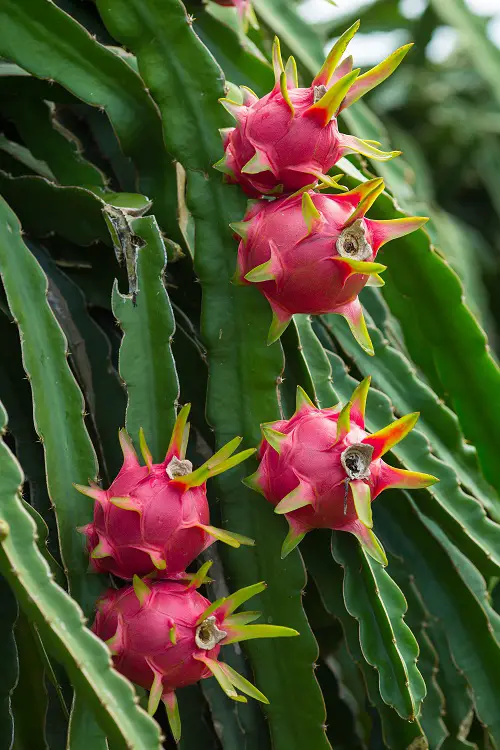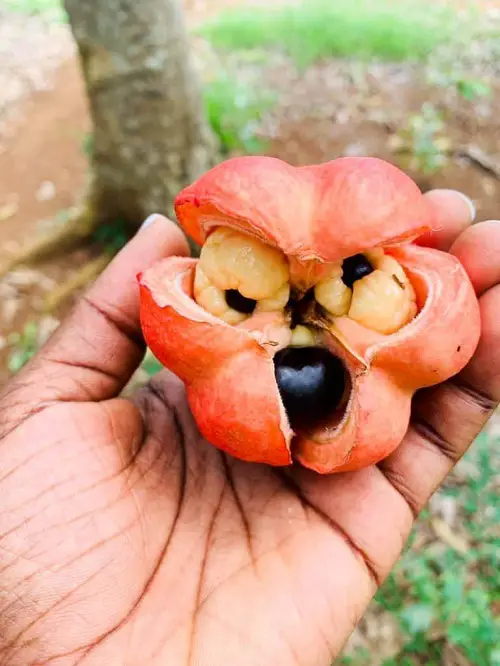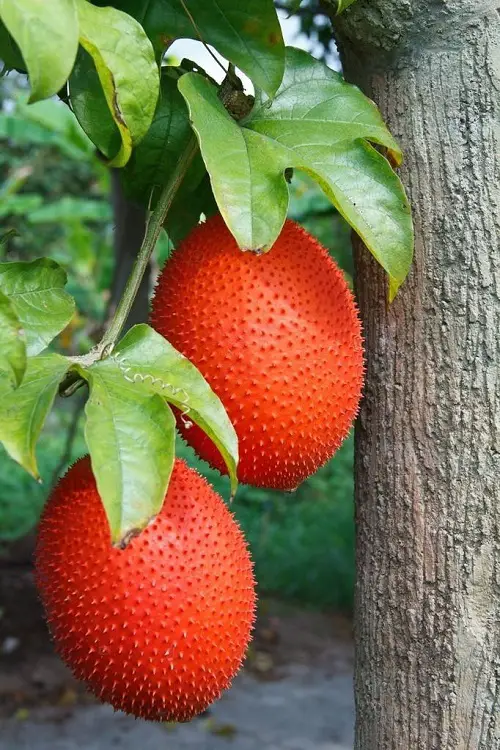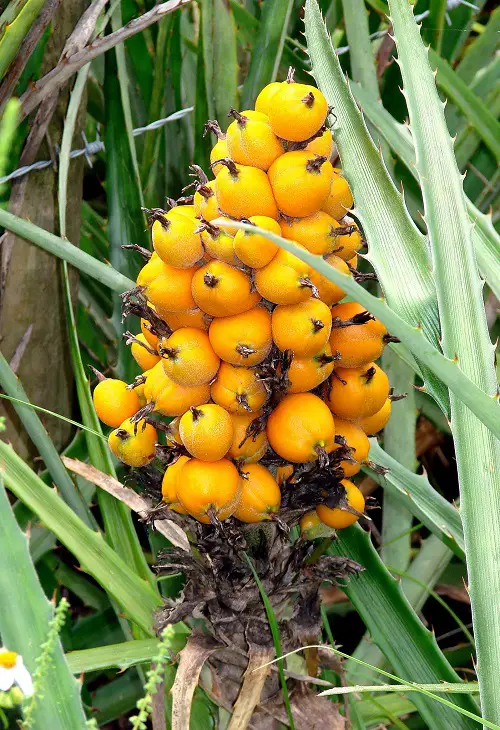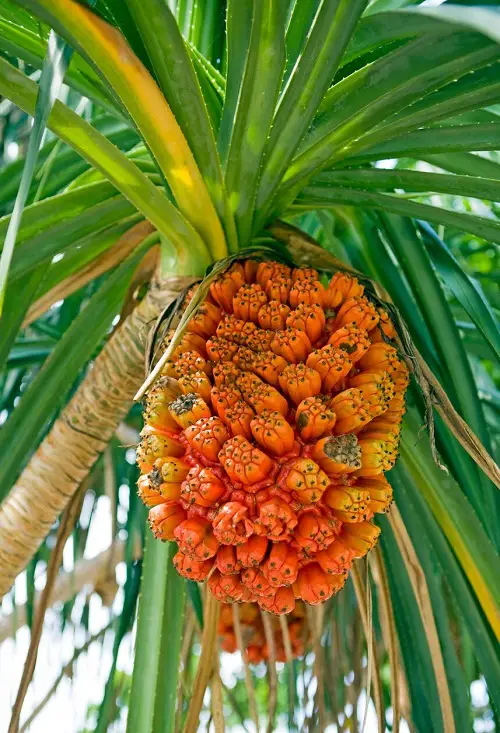In addition to being tasty, many fruits are strange due to their appearance and the way they grow. Here are the Most Strangest Fruits ever.
The fruits on this list are considered strange due to their unique features, taste, and unusual growing habitat. These are healthy, and their strange look adds to their appeal. This article lists some of the Most Strangest Fruits.
Check out Fruits that Don’t Grow on Trees
Most Strangest Fruits
1. Salak Fruit
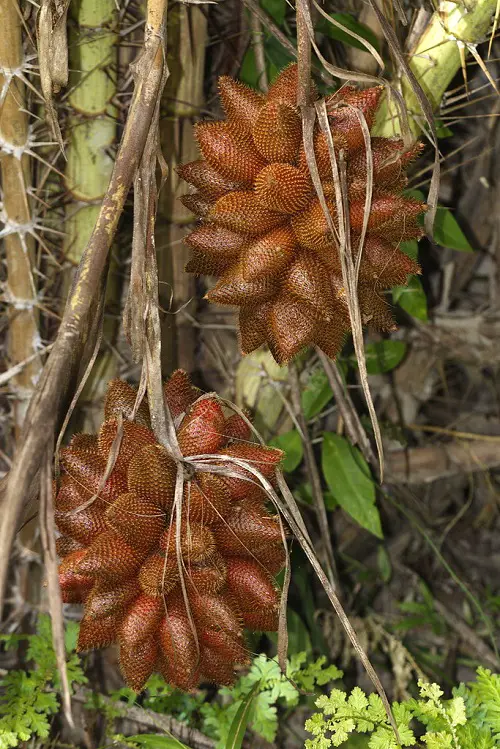
Botanical Name: Salacca zalacca
USDA Zones: 10-11
Also known as snake fruit, this fruit from Indonesia gets its name from its scaly, snake-like skin. It has a crunchy texture and a sweet and sour flavor, similar to pineapple.
2. Dragon Fruit
Botanical Name: Hylocereus undatus
USDA Zones: 9-11
This fruit, native to Central and South America, has vibrant pink or yellow skin and white flesh with tiny black seeds. It’s often called “dragon fruit” because of its spiky appearance. It has a mild, slightly sweet flavor and is commonly used in smoothies and salads.
3. Horned Melon

Botanical Name: Cucumis metuliferus
USDA Zones: 9-11
Also known as Kiwano, it has a strange spiky orange exterior and green jelly-like flesh with small seeds. It is native to Africa and is a good source of vitamin C and fiber.
4. Buddha’s Hand
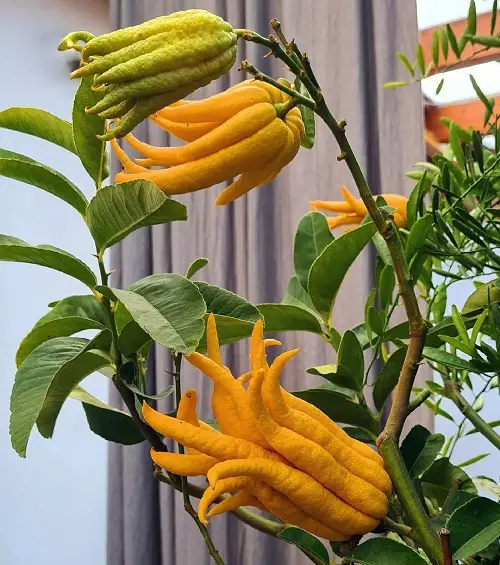
Botanical Name: Citrus medica var. sarcodactylis
USDA Zones: 8-11
This is the strangest fruit that resembles a hand with its long, finger-like protrusions and is a type of citrus fruit. It has a fragrant, sweet aroma and is often used as a decorative element in Asian cuisine or candied and used as a flavoring agent in desserts and cocktails.
5. Nipah Seeds
Botanical Name: Nypa fruticans
USDA Zones: 11-12
The fruit of the Nipah palm, native to Southeast Asia, produces large, kidney-shaped seeds that are a popular ingredient in local dishes. The seeds have a nutty flavor and a jelly-like texture and are often used in curries, stews, and desserts.
6. Ackee
Botanical Name: Blighia sapida
USDA Zones: 10-11
Akee is native to West Africa; it has a bright red exterior and a white, creamy interior with a large brown seed. It is poisonous when unripe and must be cooked properly before consumption.
7. Rambutan
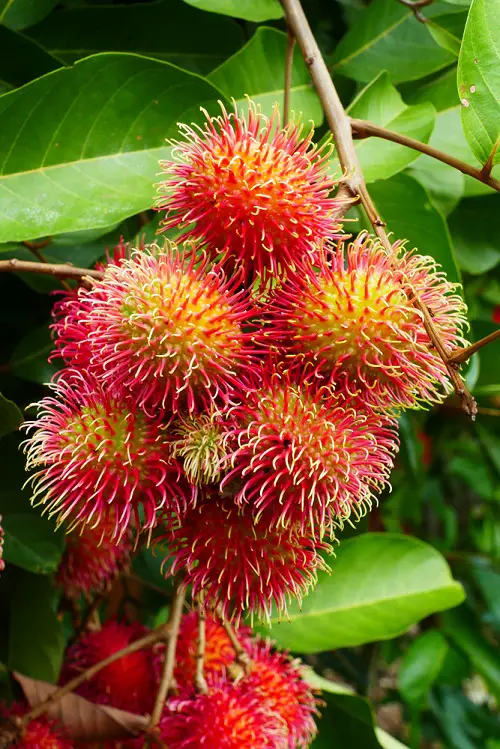
Botanical Name: Nephelium lappaceum
USDA Zones: 10-11
Rambutan is a Southeast Asia fruit and is known for its unique appearance. The fruit has a spiky, bright red exterior and a white, juicy interior with a large seed in the center. It has a sweet and slightly sour taste, similar to a grape or lychee.
8. Wood Apple
Botanical Name: Limonia acidissima
USDA Zones: 10-11
The wood apple is native to India and Southeast Asia. The fruit has a hard, woody exterior and a soft, fibrous interior with small seeds. It has a tangy, slightly sour taste.
9. Durian
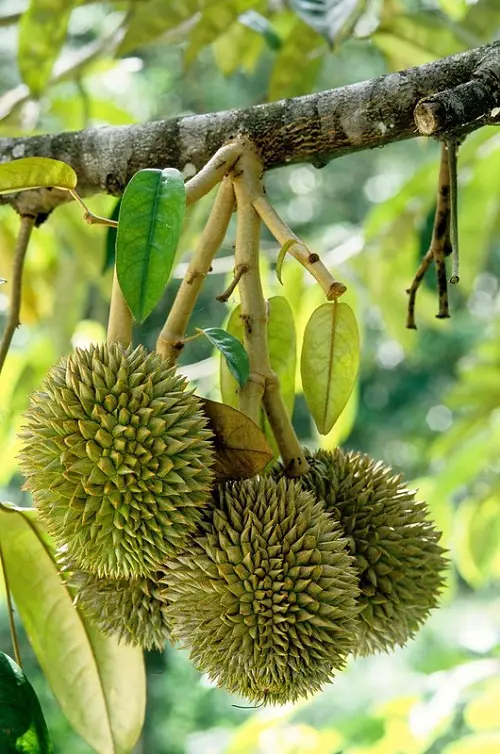
Botanical Name: Durio zibethinus
USDA Zones: 10-13
Durian is a fruit that is native to Southeast Asia and is known for its strong, pungent smell. The fruit has a spiky exterior and a creamy, custard-like interior with large seeds. It has a unique flavor that is often described as a combination of sweet, savory, and slightly bitter.
Discover Man-Made Fruits
10. Ice Cream Bean
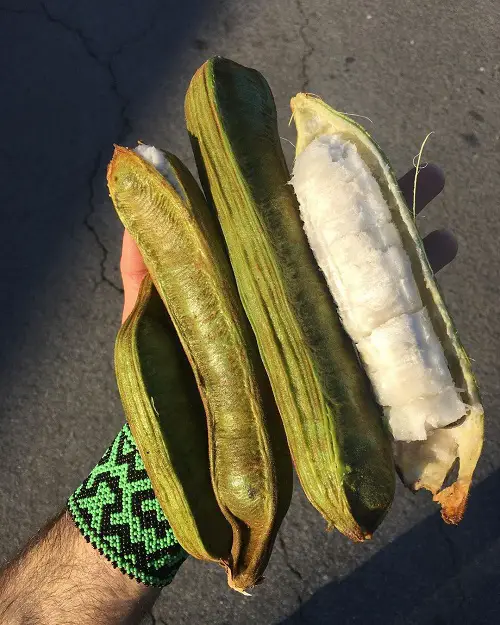
Botanical Name: Inga edulis
USDA Zones: 10-11
The ice cream bean has a long, flat pod that contains small, white seeds surrounded by a sweet cotton pulp. It has a sweet, creamy flavor that is often compared to vanilla ice cream.
11. Witch Finger Grapes
Botanical Name: Vitis vinifera ‘Witch Finger’
USDA Zones: 7-10
Witch Finger grapes are a variety of grape that is known for their unusual shape. The grapes are long and narrow, with a curved shape that resembles a witch’s finger. They have a sweet, fruity flavor and are often used in salads or eaten as a snack.
12. Mangosteen
Botanical Name: Garcinia mangostana
USDA Zones: 11-12
Mangosteen is a tropical fruit that is round, dark purple in color, and about the size of a small apple. Its white pulp is juicy and has a sweet and tangy flavor. The fruit is known for its soft, delicate texture and is often eaten fresh or used in juices, jams, and desserts.
13. Black Sapote
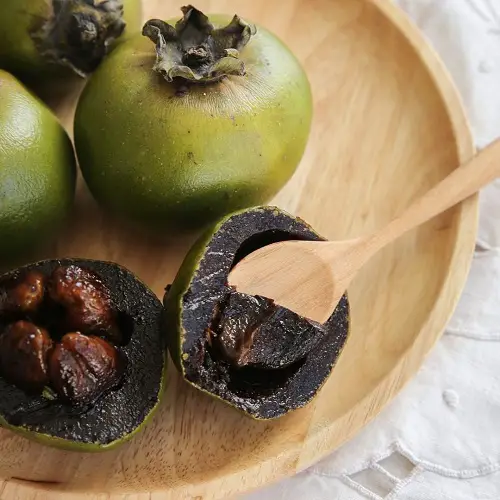
Botanical Name: Diospyros nigra
USDA Zones: 10-12
Black Sapote is a fruit native to Central and South America and is also known as the “chocolate pudding fruit” due to its rich, chocolatey flavor and creamy texture, which makes it look strange.
14. Gac
Botanical Name: Momordica cochinchinensis
USDA Zones: 8-9
It is a weird bright orange-red fruit that is native to Southeast Asia, particularly Vietnam. The fruit is spiky and about the size of a small melon, with a hard outer shell. Inside, it has a soft, juicy pulp that is rich in nutrients and antioxidants.
15. Engkala
Botanical Name: Litsea garciae
USDA Zones: 10-11
Engkala is a fruit that is similar in appearance to a small pineapple, with spiky leaves and a scaly outer layer. The fruit is bright red in color and has a sweet, tangy flavor. Engkala is often eaten raw or used in traditional Bornean cuisine.
16. Elephant Apple
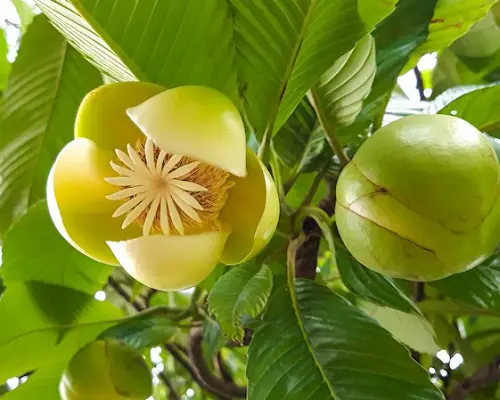
Botanical Name: Dillenia indica
USDA Zones: 9-11
Also known as Chulta in Bengali, this fruit is native to Southeast Asia and is found in the Indian subcontinent. It is about the size of a small apple and has rough, brownish-green skin. The flesh is white, fibrous, and sour, with a slightly astringent taste.
17. Pinuela
Botanical Name: Bromelia plumieri
USDA Zones: 9-11
Pinuela has a unique appearance, with a spiky, pineapple-like exterior and a bright orange or yellow interior. Pinuela is often eaten fresh or used in jams and desserts.
18. Pandanus
Botanical Name: Pandanus spp.
USDA Zones: 9-11
Pandanus is a tropical fruit that is native to Southeast Asia and is also found in the Pacific Islands. It has a strange appearance, with long, pointed leaves that grow in clusters around a central stem. The fruit itself is small, round, and red or yellow in color.
19. Cannonball Fruit
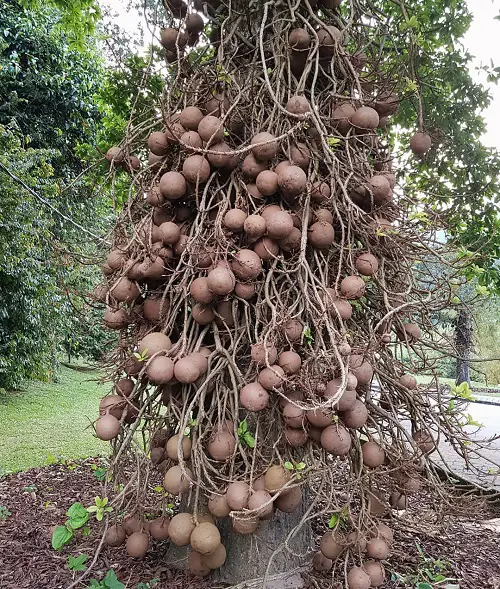
Botanical Name: Couroupita guianensis
USDA Zones: 10-11
Native to Southeast Asia, the Cannonball fruit is also known as Nagami Kumquat. It is a popular fruit in many parts of the world due to its unique flavor and versatility in cooking.


